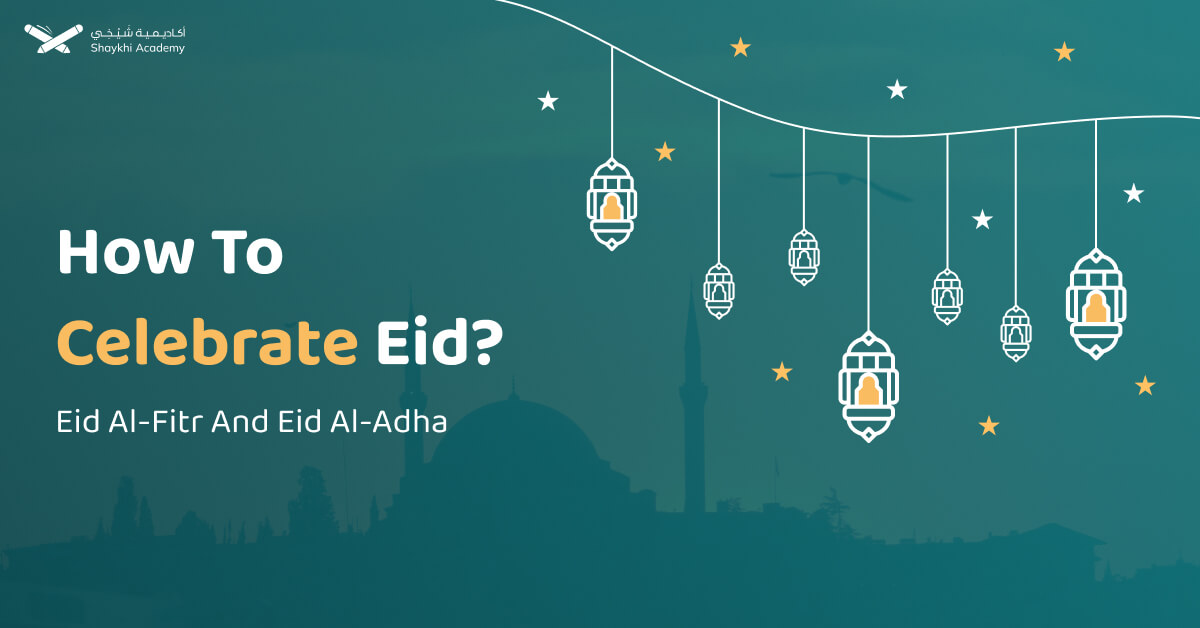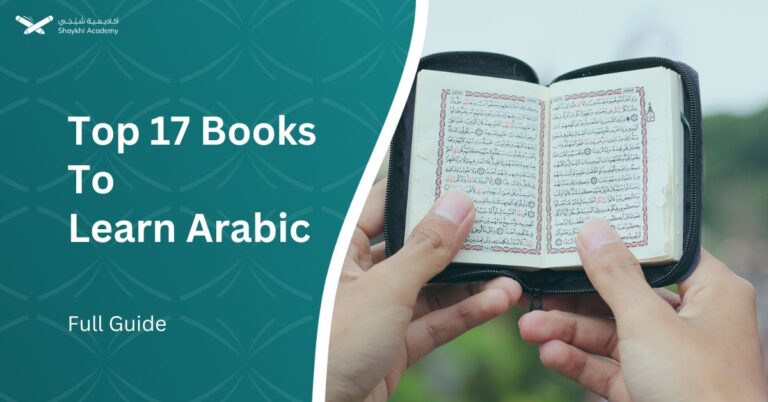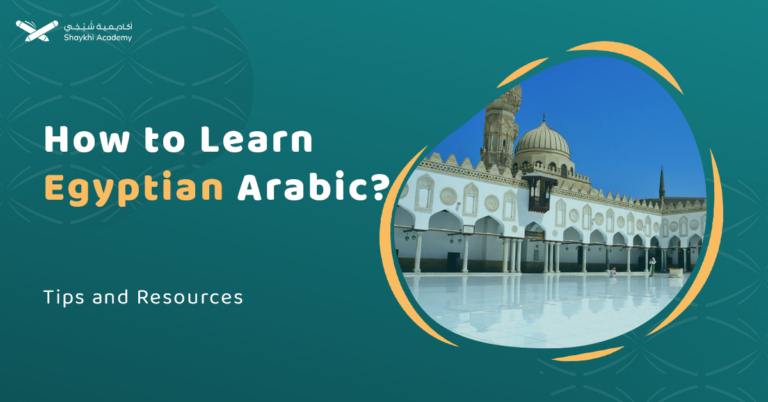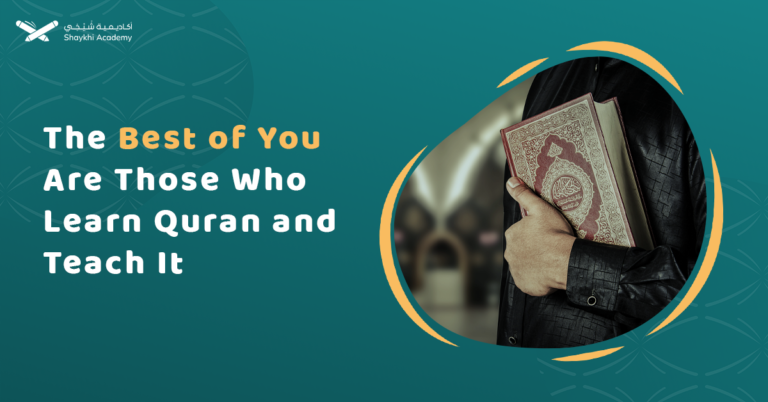How to celebrate Eid? in the beginning, we should know that Eid means celebration or festival, is a renowned term in Islam. Muslims celebrate Eid ul-Fitr and Eid ul-Adha, two distinct Eid times, in accordance with the teachings of the Prophet Muhammad (PBUH). These are the moments when Allah (SWT) celebrates the happiness of His people and inspires joy in everyone.
Eid ul-Fitr and Eid ul-Adha festivals emphasize gratitude, reflection, and community unity. Celebrations include prayer, charity, feasting, exchanging gifts, and spreading joy to others. Whether celebrating with family, friends, colleagues, or alone, Eid festivals symbolize faith, compassion, and cultural heritage, enriching the spiritual and social fabric of society.
Eid Celebration:
Eid celebration, also known as Eid al-Fitr or Eid ul-Fitr, is a joyous Islamic festival that marks the end of Ramadan, the holy month of fasting. It is a time of gratitude, reflection, and communal solidarity for Muslims worldwide. Eid celebrations typically last for three days and are characterized by various religious and cultural practices.
Eid celebration is a time of joy, unity, and spiritual renewal, bringing Muslims together to commemorate the end of Ramadan and express gratitude for the blessings of Allah.
How to celebrate Eid festival?
Twice a year, Muslims celebrate Eid, the Islamic festival, to remember two important events. Although these two celebrations go by various names, the most popular ones are Eid al-Fitr, also known as the “Festival of Breaking Fast,” and Eid al-Adha, also known as the “Festival of the Sacrifice.
Both involve giving to the needy and prayer, and they are occasions to celebrate with loved ones, but they also differ significantly in a few important ways. You’ll learn all there is to know about how to celebrate Eid, from Shaykhi’s easy-to-read guide, including the fasts, prayers, gifts, and sacrifices that are involved.
1. Prayer:
The day begins with a special Eid prayer, known as Salat al-Eid, performed in congregation at mosques or designated prayer grounds. Muslims gather early in the morning to offer this prayer, seeking blessings and forgiveness from Allah.
2. Charity:
Zakat al-Fitr, for example, is given by Muslims before the Eid prayer. This charity aims to ensure that everyone, especially the less fortunate, can participate in the festivities by providing for their basic needs.
3. Family and Community:
Eid is a time for families to come together, share meals, and exchange gifts. People often dress in their finest clothes, visit relatives and friends, and host elaborate feasts to celebrate the occasion. Community gatherings, such as street fairs and festivals, also play a significant role in Eid celebrations.
4. Feasting:
Delicious and festive meals are an integral part of Eid celebrations. Traditional dishes vary depending on the culture and region but often include savory and sweet treats like biryani, kebabs, sweets, and desserts.
5. Giving Thanks:
Eid is a time for Muslims to express gratitude for the blessings received during Ramadan and to reflect on their spiritual journey throughout the month. It is also an opportunity to renew one’s commitment to faith, compassion, and righteousness.
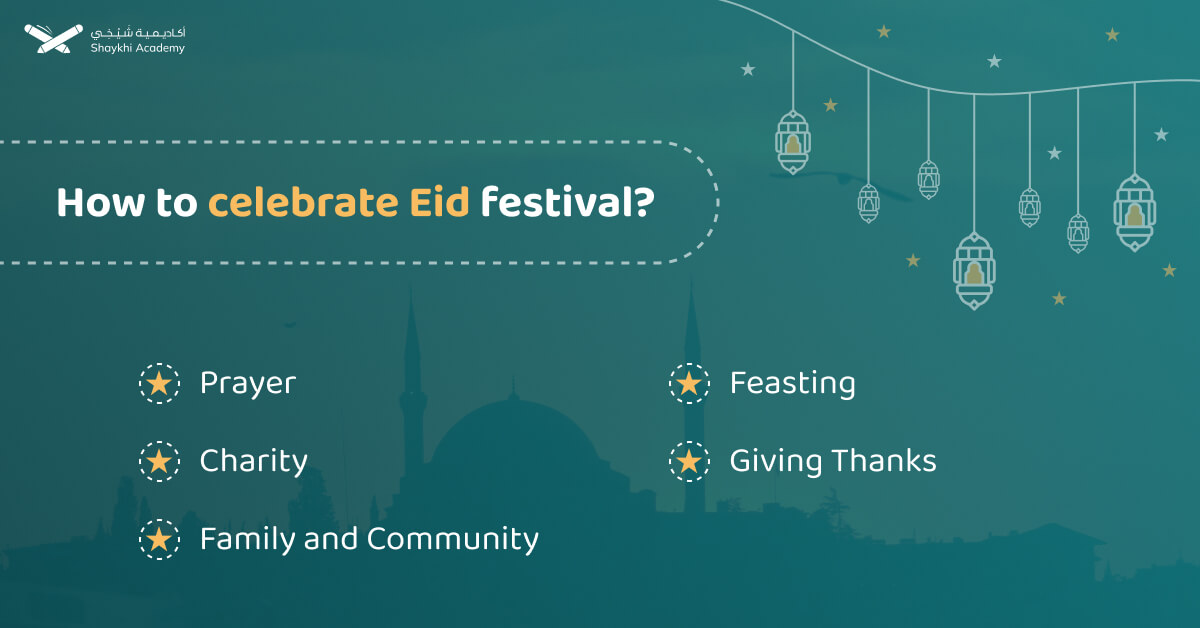
How to celebrate Eid al-Fitr
Eid al-Fitr is celebrated over two or three days and involves special morning prayers.
1. Eid Prayers and Greetings:
Eid al-Fitr involves special morning prayers and the exchange of greetings such as “Eid Mubarak,” accompanied by ceremonial hugs.
2. National Holiday and Closures:
Eid al-Fitr is celebrated as a national holiday in several countries with majority Muslim populations. Shops, offices, and schools are closed to allow people to enjoy the festivities with family and friends.
3. Leave Requests and Celebrations:
In countries like the United States and the United Kingdom, Muslims can request time off from work or school to travel or celebrate Eid with loved ones.
4. Home Decorations and Special Cuisine:
Muslims decorate their homes with lanterns, lights, or flowers, particularly in places like Egypt. Special cuisine is prepared, and gatherings with friends and family are organized to celebrate the occasion.
5. Sweet Treats and Gifts:
At home, sweet treats are prepared, and gifts are given to underprivileged individuals and children. Muslims emphasize seeking and extending forgiveness during this time.
How to celebrate Eid al Adha?
Eid al-Adha follows the Hajj pilgrimage and commemorates Prophet Abraham’s obedience to God’s command to sacrifice his son Ismail. It symbolizes submission to God’s will and mercy, with Muslims sacrificing an animal and sharing the meat with others.
1. Eid al-Adha and the Hajj:
Eid al-Adha, also known as the “feast of the sacrifice,” follows the annual pilgrimage to Mecca known as the Hajj, which is obligatory for those who can afford it.
2. Abraham’s Sacrifice:
Eid al-Adha commemorates the story of Prophet Abraham’s willingness to sacrifice his son, Ismail, as a test of faith. According to the Quran, Satan tried to tempt Abraham away from God’s command, but Abraham remained steadfast.
3. Divine Intervention:
As Abraham prepared to sacrifice his son, God intervened and provided a ram to sacrifice instead. This act symbolizes God’s mercy and the importance of submission to His will.
4. Animal Sacrifice:
Muslims commemorate Eid al-Adha by sacrificing an animal, typically a sheep, goat, cow, or camel, to honor Abraham’s sacrifice and to share the meat with family, friends, and the less fortunate.
5. Reminder of Submission:
Eid al-Adha serves as a reminder for Muslims to submit to God’s will and to demonstrate obedience and devotion in their lives. It is a time for reflection, gratitude, and spiritual renewal.
How to celebrate eid as a non muslim
Alongside Eid, everyone enjoys parties and celebrations, and Eid is a wonderful opportunity to establish a connection and build rapport with your friends and coworkers who are not Muslims. Here are seven ideas to spread the joy of Eid-al-Adha to others:
1. Talk about it without fear:
It’s possible that some of your neighbors, coworkers, and students are unaware that it’s Eid or even the month of Hajj. Mention a specific festive custom you and your family will be celebrating on Eid in casual conversation. Inform your instructors or supervisors about it as well, so they will be aware of the holiday and will know you might require the day off.
2. Stay receptive to inquiries:
It’s possible that your pals have inquiries but are unsure of how to ask them. Some could be worried of upsetting you. Remind them that they should never hesitate to ask questions and that they are welcome to do so.
Refresh your memory on the specifics of the fast, Hajj and Eid—you’ll want to be prepared to respond to inquiries with assurance!
3. Become well known:
Do you have a Twitter or Facebook account? It’s likely that friends, classmates, or coworkers who are not Muslims are on it. Providing links to related articles is an excellent method of educating people about Eid and Muslims in general.
Did the Boston Globe publish a photo gallery of Eid celebrations from around the globe? Has the BBC published a Hajj and photos? Connect with them!
4. Put it in the newsletter:
Is there a monthly or quarterly newsletter published by your community or company? Do you have a student newspaper? Requesting that a brief description of Eid-al-Adha—perhaps even written by you—be included, along with information regarding its significance to Muslims and how it is observed, may necessitate some forward planning.
Reminders like this, which are brief yet pleasant, will help people remember and get more familiar with the occasion.
5. Talk about Eid’s altruistic aspects:
Discuss the concept of zakat, charity and the reasons for Muslim calls to donate to the underprivileged during the Eid holidays. To truly take the initiative, you might even establish a food drive at your place of employment or education and invite your colleagues to contribute in the spirit of Eid.
6. Share your joy with your coworkers!
Have you ever received an invitation from friends or coworkers to a Christmas party? If so, did you accept? Pay it forward. Bring a few people around to celebrate Eid and share with them the meaning and purpose of the holiday. They will comprehend you and your Islamic customs better and feel like they are a part of the event.
7. Give out sweets:
Everyone enjoys sweets! Bring inexpensive, little goodie bags or items to distribute. Distribute little bags or baskets of homemade treats cookies, candies, brownies, etc. to save money.
Remember to wish everyone a happy Eid Mubarak as you distribute the sweets! Maybe if you explain what “Eid Mubarak” means, they’ll remember to say it to you on the following Eid.
How to celebrate eid alone
However, although we’re alone ourselves, there are methods to keep the spirit of Eid without relatives. These are a few ideas for eid.
1. Ensure that you take the day off:
Shrouding ourselves in work or study may seem like a simpler way to mask our loneliness, but it won’t do much to strengthen our faith. Make sure Eid day is free by speaking with your employer well in advance if you require a day off from work.
2. Make plans to go to Eid prayers with a companion or group of companions:
Being the only person attending Eid prayers might be scary, especially when you observe most people hugging their families enthusiastically after the rituals.
Take a companion or group of buddies with you. After prayers, make sure to extend a hearty Eid greeting to one another. Treat anybody you meet by themselves in the prayer hall or mosque the same way.
3. Tidy and embellish the home:
Decorate it even if all you have is a little flat that doesn’t actually provide you much room. You may use streamers, lights, banners, balloons, and more. As you decorate, don’t forget to listen to some motivational Eid anasheed.
4. Invest in and don new clothing:
Getting new garments is part of the joy of Eid. If you can afford them, get new ones.
If not, you need to own a few elegant dresses at minimum. For the big day, get them pressed, dry cleaned, or cleaned.
5. Pay friends and family a visit:
Perhaps you and your hectic schedules prevent you from spending much time with a Muslim family or close friend who lives two or three hours away. On Eid, pay them a visit. And bring them a present, or at the very least an Eid card.
Visit those who are closer to home if that isn’t feasible.
6. Provide food for the needy:
One of the main traditions of Eid-ul-Adha in particular is feeding the hungry. If you are unable to make arrangements to visit a farm and provide your portion of meat for distribution to the underprivileged, spend a portion of Eid helping in a soup kitchen or shelter.
7. After an amazing day, send your buddies a poke, text message, or an Eid e-card
Feel free to send funny texts on your phone, tease your pals on Facebook, or send electronic cards for Eid. Share the happiness of this auspicious day!
How to celebrate eid at home
Ideas for this year’s home celebrations:
- Wear some elegant clothing. Sure, carry it out! Even if you might not be seeing your grandparents, friends, or other family members, dressing up will make the event feel much more memorable.
- Adorn your home to mark the momentous event.
- Prepare a Few Snacks. Maamoul is a nut-filled pastry that resembles cookies. Although it may be made with any kind of nut filling, walnuts, pistachios, or almonds work best. or Simple Sugar Cookies, then work as a family to decorate them.
- Engage in some gaming.
- Give your family members presents for one another.
- Storytime with the family. Set aside time to tell stories. This is a great opportunity for you to share with your children lessons about the magnificent history of Islam or short anecdotes from the lives of the Prophet Muhammad (PBUH) and his companions that will help them learn and develop good habits.
How to celebrate eid at work
These are methods to celebrate Eid al-Adha at work.
1. Plan eat meals:
Urge staff members to share customary Eid-al-Adha foods with their peers. This fosters a feeling of belonging and makes the festival’s rich tastes accessible to everybody.
2. Adorn the workplace:
Decorate the office area with Eid-themed decorations to turn it into a celebratory atmosphere. To create a celebratory environment, hang colorful banners, hang fairy lights, or exhibit traditional decorations. The employees’ morale will be raised and they will feel the excitement of Eid in this visually pleasing environment.
3. Exchanges of gifts:
Encourage colleagues to exchange presents that are in line with the Eid al-Adha spirit rather than the customary one.
To share the joy of giving and promote a worthwhile cause, participants might, for instance, make a donation on behalf of the receiver of their gift to a selected charity.
4. A seminar on cultural sensitivity:
Organize a training session so staff members may discover the meaning and traditions of Eid-al-Adha. To promote tolerance and knowledge of other cultures, arrange a lecture or invite a guest speaker.
5. Lunch and Education:
Set up a lunchtime workshop so staff members may discover customs, tales, and cultural practices related to Eid al-Adha.
To build a diverse workplace and encourage cross-cultural understanding, invite a guest speaker or lead a conversation.
6. Charity and volunteer work:
It is customary to give and share on Eid al-Adha. Set up a volunteer or charitable program so that staff members may support a worthwhile cause. It can entail making a donation to a nearby nonprofit, setting up a food or clothing drive, or performing community work.
This group’s endeavor exemplifies the virtues of kindness and giving, reflecting the actual essence of Eid al-Adha.
7. Best wishes and greetings:
Encourage staff members to wish and greet one another a happy Eid. Establish a special area or message board where employees may write sincere notes to their coworkers.
Everyone feels respected and appreciated as a result of this small act of kindness, which fosters a sense of community and friendship.
8. Dress up as it’s Eid:
Set aside a day on which staff members can dress traditionally or in ways that honor Eid al-Adha. This gives everyone a chance to highlight their cultural background and livens up the office. To add some interactivity and fun, think about planning a little fashion show or a “best-dressed” competition.
9. Treats and sweets:
Arrange a dessert station with a selection of customary Eid pastries and snacks. Add well-known treats such as Kahk, and baklava. In addition to satisfying workers’ sweet tooths, this delicious spread will give them a taste of the rich culinary traditions connected to Eid al-Adha.
How to celebrate eid in preschool
These are a few fascinating things you can do with your children.
1. Dressing up new clothes:
Permit your children to commemorate the occasion by dressing in traditional Islamic attire.
You may assist your children with dressing up in creative and simple costumes such as headwear, turbans, scarves, long gowns, and so on.
2. The theme of the Muslim Country:
Inform the children about the many nations that practice Islam.
Now give them a task to investigate and identify an object that may be associated with each of the nations listed. Make use of these for your décor. It can be among the most fantastic and enjoyable crafts for kids to make this Eid.
3. Learn them About Muslim Culture:
Teach your children a variety of interesting things about Muslim culture to add to the day’s specialness.
Inform them of several facts and topics about the significance of giving and praying during Eid celebrations.
4. A Tale of Eid:
The best approach to teach your children the value of celebrating Eid is via storytelling.
Take your child down to bed and read them some engaging, kid-friendly stories that revolve around the topic of Eid.
Read an online tale or one from a book.
5. Muslim Food Platter:
Make sure your children help create a tasty dish with a theme to fully embrace the Eid spirit.
You can ask your child to add dates, date-based desserts, sherbet, pomegranates, olives, and other items to the list of foods. For youngsters, making a Muslim food plate is a great Eid activity.
6. Spread The Joy:
Encourage your child to spread some happiness to the less fortunate in the real spirit of Eid.
You may get your children involved in donating food to an orphanage or shelter in your community.
Shaykhi gave you great ideas that help you know how to complete Eid Al Fitr and Eid Al Adha, every year and you are fine if you want to explore additional information, contact us immediately.
Unlock the Path to Quranic Mastery with Shaykhi Academy!
Are you seeking the finest Quranic education right from the comfort of your home? Look no further! Shaykhi Academy stands out as a premier online Quran learning platform, dedicated to providing exemplary education to both children and adults.
Why Choose Shaykhi Academy?
- Connect with highly qualified native tutors.
- Flexible scheduling to suit your busy lifestyle.
- Affordable classes tailored for all levels.
- Accessible from anywhere around the globe.
Discover Our Range of Courses:
- Arabic Noorani Qaida: Lay a solid foundation for Quranic studies.
- Online Quran Classes for Kids: Engaging lessons for lifelong learning.
- Tajweed Rules for Kids: Learn to recite with confidence.
- Quran Hifz for Kids: Step-by-step guidance to memorize the Quran.
- Quran for Adults: Introduce yourself to Quran reading and Tajweed rules.
- Online Arabic Courses: Master the language of the Quran.
- Islamic Studies: A wide range of topics related to Islam, including theology, law, Quranic studies, Hadith.
Don’t Miss Out on Your Chance to Excel!
Whether you’re a beginner or seeking advanced knowledge, Shaykhi Academy can guide you! Book your free trial now and make Ramadan 2024 your Quranic turning point!
Conclusion:
Eid celebrations are significant occasions for Muslims worldwide, fostering unity, gratitude, and reflection. Whether celebrating with family, friends, colleagues, or alone, Muslims observe Eid with prayers, charity, feasting, and sharing joy with others. Through various rituals and practices, Eid festivals embody the values of faith, compassion, and community, enriching the spiritual and social well-being of individuals and society as a whole.
